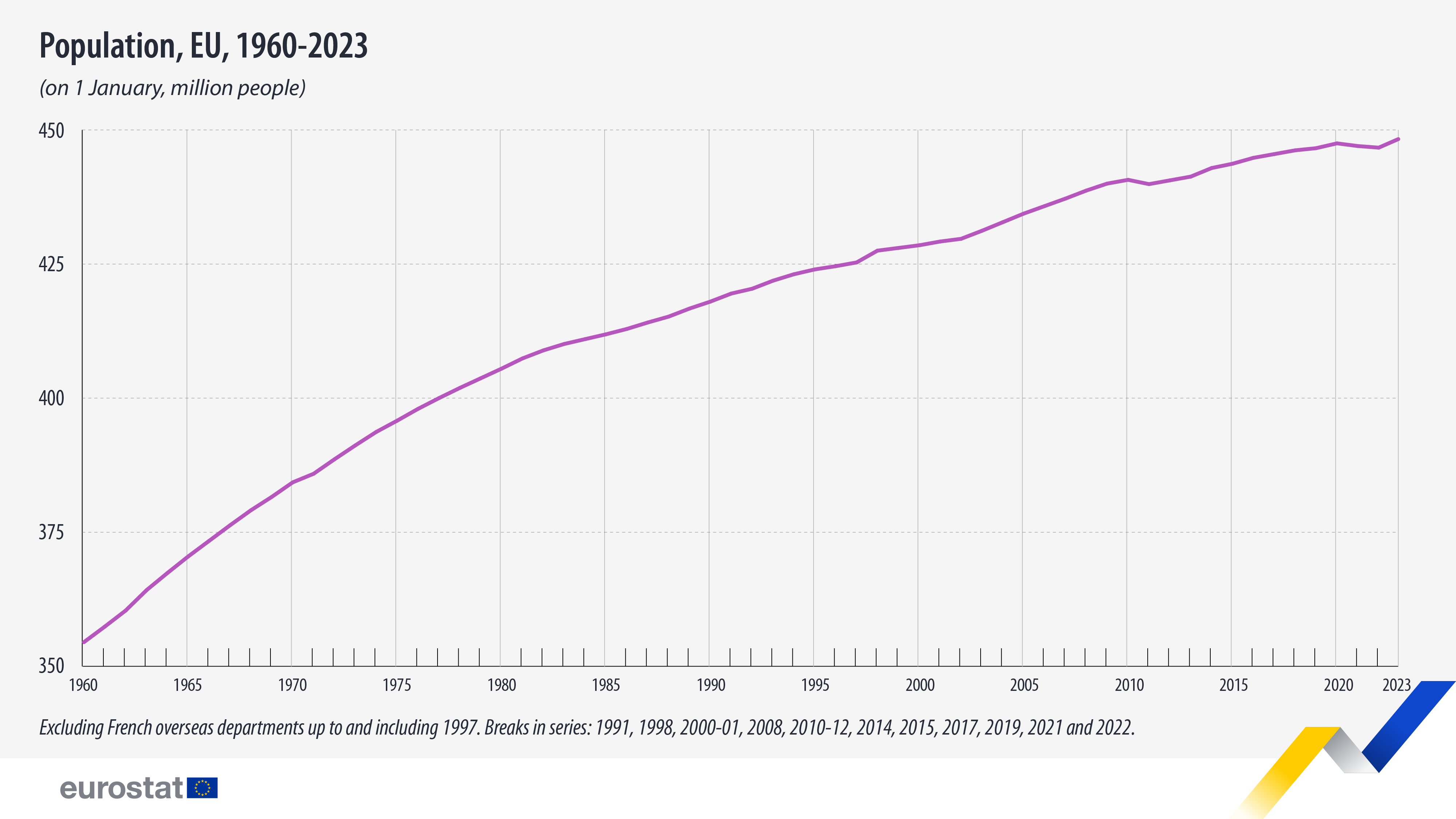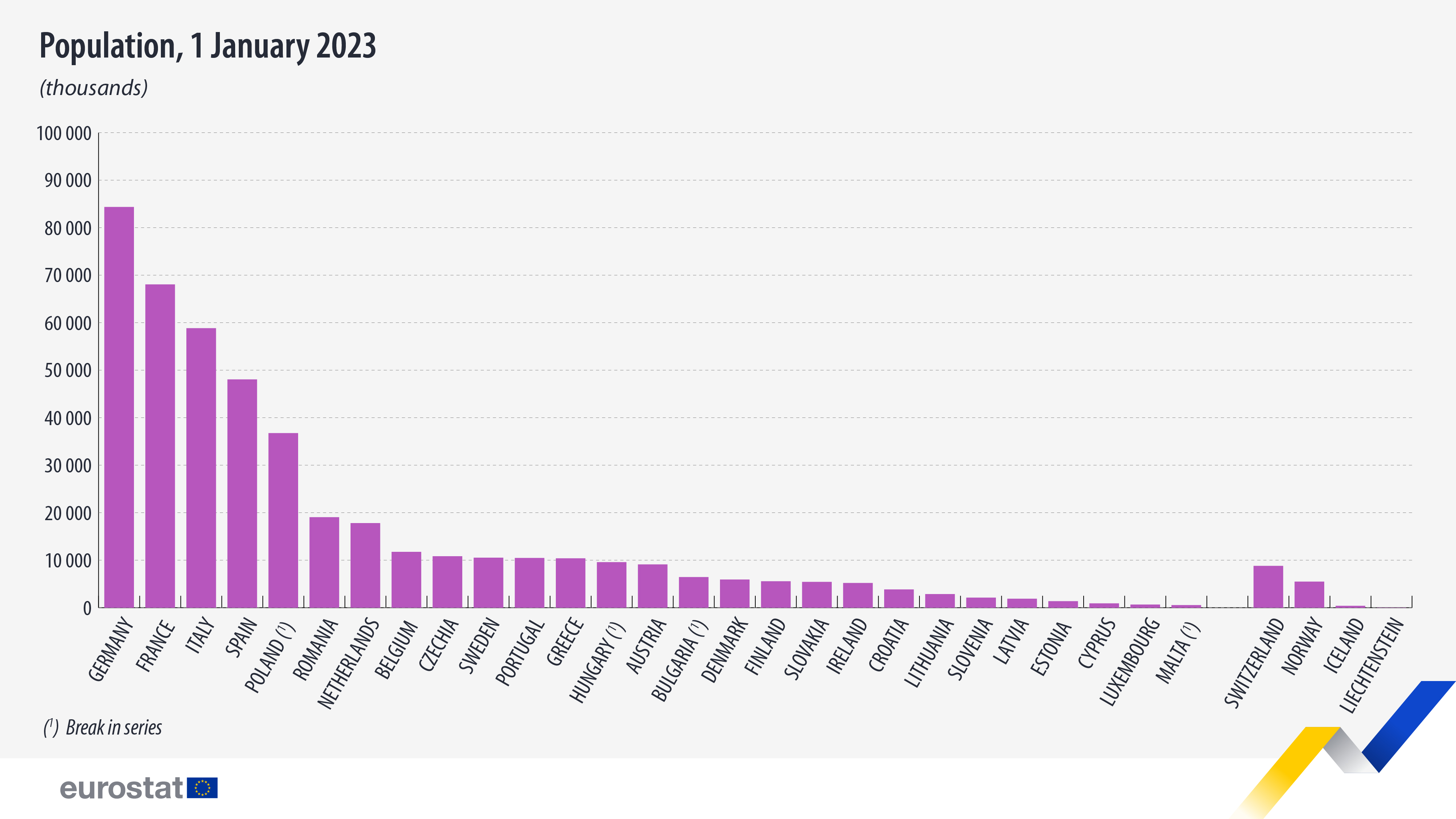EU population increases again after two years decrease

On the occasion of World Population Day, we take the opportunity to highlight the data published today on EU population.
After a decline in population in 2020 and 2021 due to the impact of the COVID-19 pandemic, the EU’s population increased in 2022, from 446.7 million on 1 January 2022 to 448.4 million people on 1 January 2023. The negative natural change (more deaths than births) was outnumbered by the positive net migration. The observed population growth can be largely attributed to the increased migratory movements post-COVID-19 and to the mass influx of displaced persons from Ukraine who received temporary protection status in EU countries, as a consequence of the Russian invasion in February 2022.
This information comes from data on population published by Eurostat today. This article presents only a handful of findings from the more detailed Statistics Explained article on population and population change statistics.
Source dataset: demo_gind
Over a longer period, the population of the EU grew from 354.5 million in 1960 to 448.4 million on 1 January 2023, an increase of 93.9 million people. The rate of population growth has slowed down gradually in recent decades: for example, the EU population increased, on average, by about 0.8 million persons per year during the period 2005–2022 compared with an average increase of around 3.0 million persons per year during the 1960s. While the EU population shortly declined in 2020 by around half a million persons and in 2021 by almost 0.3 million persons due to the COVID-19 pandemic, it has started to regain its growth as the new figures show.
Source dataset: demo_gind
The population of individual EU countries on 1 January 2023 ranged from 0.5 million in Malta to 84.4 million in Germany. Germany, France and Italy together comprised almost half (47%) of the total EU population on 1 January 2023.
While the overall EU population increased in 2022, population increases were not observed in every Member State. In total, seven countries recorded a decrease in population between 1 January 2022 and 2023, with the largest decrease reported in Italy (-179 419 persons) and the smallest in Slovakia (-5 920). Increases were observed in the other 20 countries, with the largest in Germany (1 121 721) and the smallest in Latvia (7 251).
For more information
- Statistics Explained article on population and population change statistics
- Dedicated section on population and demography
- Database on demography, population stock and balance
Methodological notes:
- The break of series for Bulgaria, Hungary, Malta and Poland is due to the implementation of the 2021 population and housing censuses
- Guidance on the inclusion of refugees from Ukraine who benefit from temporary protection in the EU in the usually resident population
If you have any queries, please visit our contact us page.


